Dinosaurs dominated Earth for over 140 million years before having their reign ended by a colossal asteroid impact.
Is it possible to bring these long gone reptiles back from the dead and, if we could, would we really want to?

Crocodiles and dinosaurs share a common ancestor, so could crocodile DNA hold the key to bringing these extinct reptiles back? © Alias 0591 from the Netherlands/ Wikimedia Commons (CC BY 2.0)
Dinosaurs dominated Earth for over 140 million years before having their reign ended by a colossal asteroid impact.
Is it possible to bring these long gone reptiles back from the dead and, if we could, would we really want to?
Dr Susie Maidment, a dinosaur researcher at the Museum, explains just how difficult it would be to resurrect ancient reptiles Jurassic Park style.
The classic concept for dinosaur resurrection starts with a DNA-filled mosquito that has been preserved in amber for millions of years. But is this a scientific possibility or strictly resigned to fiction?
Amber is tree resin that has fossilised due to high pressure and temperature, conditions experienced when spending thousands of years covered by layers of sediment. Over time the resin hardens to form a gemstone that has been coveted by humans for thousands of years.
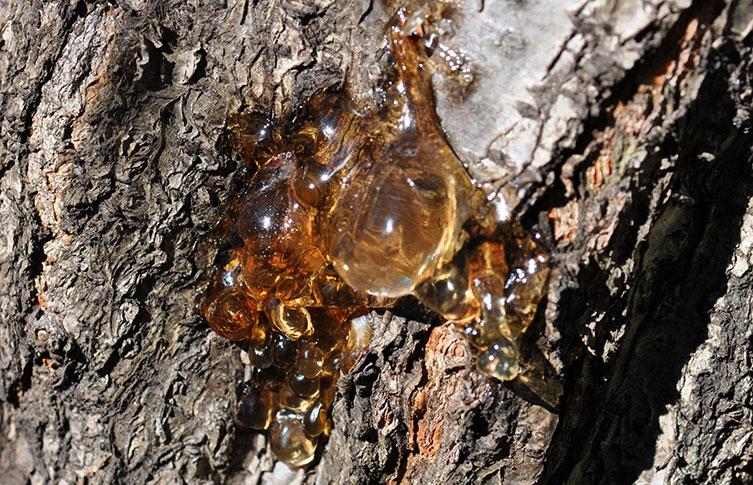
The orange-coloured resin produced by some trees can solidify under specific circumstances to form the gemstone amber © Dietmar Down Under/ Flickr (CC BY 2.0)
The dinosaur DNA that could be preserved inside amber-entombed blood-sucking insects is of interest as DNA contains the genetic information for the growth and function of all living things. Could ancient DNA recovered from amber could serve as a genetic blueprint for recreating the extinct animals?
Susie says, 'We do have mosquitos and biting flies from the time of the dinosaurs and they do preserve in amber. But when amber preserves things, it tends to preserve the husk, not the soft tissues. So you don't get blood preserved inside mosquitos in amber.'
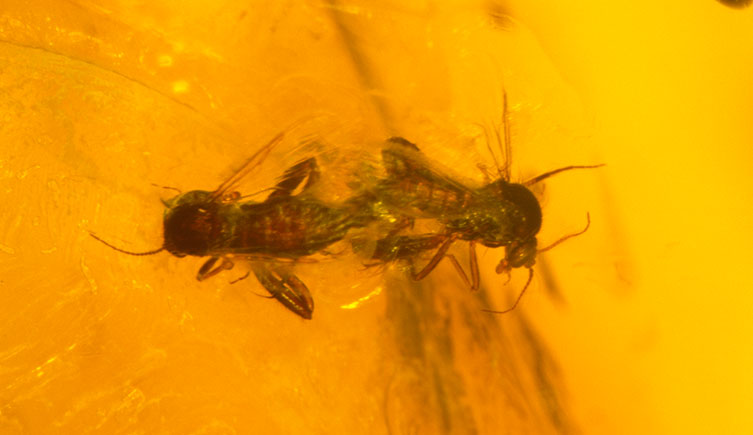
This is a pair of biting midges from the Upper Eocene, between 37-33 million years ago. It is unlikely that any blood they may have consumed in life would have survived the preservation process.
This means that Jurassic Park is probably not possible exactly as Michael Crichton wrote it. But the search for dinosaur DNA doesn't end there. Blood residue has been found inside ancient insects - they just weren't found in amber.
'A couple of years ago a paper came out about a mosquito from the Eocene - that's around 45 million years ago, so around 20 million years after the dinosaurs died out. The mosquito was preserved in lake sediments and had a red pigment in its abdomen. When they tested that pigment chemically they discovered haemoglobin-derived porphyrins.'
These are the breakdown products of haemoglobin, which is the red protein that carries oxygen around the body in the blood of almost all vertebrates.
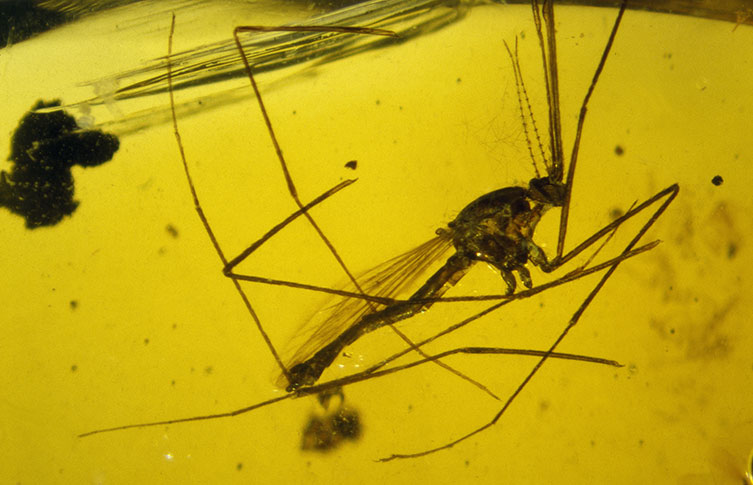
This piece of amber has a 20-million-year-old mosquito trapped inside it. In Jurassic Park, a specimen like this, though much older, is used to help resurrect the dinosaurs.
'The idea that we may one day find a mosquito or biting fly from the Mesozoic with some parts of the blood still preserved is not outrageous,' says Susie.
When under specific circumstances blood does preserve, it doesn't mean that scientists will find DNA in it. So even if a dinosaur's blood was found inside an ancient insect, an opportunity to recreate the reptile from it isn't guaranteed.
In 2015, Susie and her colleagues discovered what they interpreted to be red blood cells inside a Cretaceous dinosaur fossil bone.
'We don't think it is from modern contamination. The blood cells have nuclei and you don't find those in mammals, so it must be a reptilian red blood cell. We compared it with red blood cells from birds and it showed some morphological similarities.
'We sectioned the cells using a focused ion beam, which is like a really high-powered, ultra-small knife and we stained the nuclei to see if there was any DNA - but we didn't find anything.
'Even if you find blood or soft tissue, you don't necessarily find DNA.'

Albertosaurus is a dinosaur that lived during the Cretaceous Period. Scientists have found dinosaur blood and soft tissue in fossils that are of a similar age.
Ancient DNA has so far been recovered from permafrost, as well as from subfossils - bones or body parts that have not yet fossilised.
But DNA is vulnerable and breaks down rapidly. Sunlight has negative effects and water can also accelerate deterioration. Modern contamination is also a problem. DNA has to be handled under strictly controlled conditions.
Currently the oldest DNA to have been found is around one million years old, although it is possibly younger. DNA 66 times older would have to be found to get to the age of dinosaurs.
If dinosaur DNA were found, what happens next? If you work at Jurassic Park's genetic engineering facility you simply combine it with frog DNA and recreate an extinct reptile.
'In Jurassic Park, they say that they found fragmented DNA. They identified where the holes are and filled them with frog DNA. But the problem is that you don't know where the holes are if you don't have the whole genome,' explains Susie.
A genome is the complete set of DNA of a living thing. Without the full genome, it would be impossible to tell which parts of the DNA have been found and therefore impossible to fill the gaps to build a whole animal.
'But if you did have the whole genome and you were going to fill the holes in fragments, then you definitely wouldn't do it with frogs, because frogs are amphibians. If you were going to do it, you'd use bird DNA, because birds are dinosaurs. Or you might do it with crocodile DNA, because they share a common ancestor.'
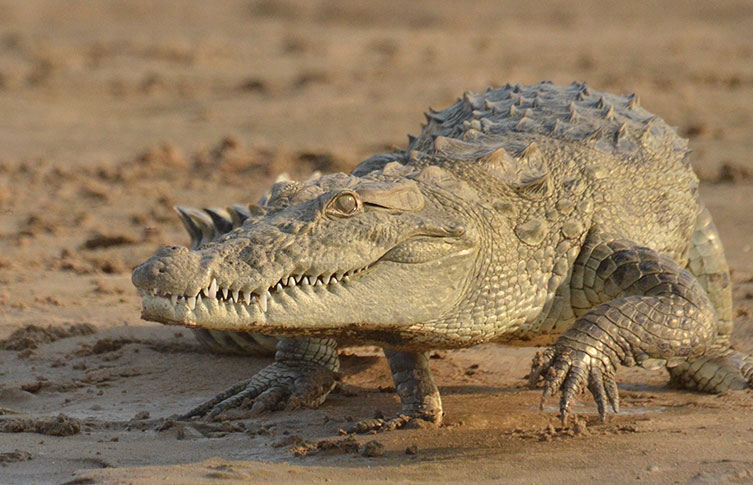
In Jurassic Park, scientists used frog DNA to fill gaps in the dinosaur DNA they found. However, in this scenario, crocodile DNA would be better suited as these animals and dinosaurs share a common ancestor. © Arjun Bharioke/ Wikimedia Commons (CC BY-SA 4.0)
DNA breaks down over time. The dinosaurs went extinct around 66 million years ago and with so much time having passed it is very unlikely that any dinosaur DNA would remain today. While dinosaur bones can survive for millions of years, dinosaur DNA almost certainly does not.
But some scientists continue to search for it - just in case.
So it looks like cloning a dinosaur is off the table, but an alternate way to recreate the extinct animals would be to reverse-engineer one. This involves starting with a living animal and working backwards towards ancient reptiles, attempting to reverse at least 66 million years of evolution.
Susie explains, 'You could take a chicken and genetically engineer it so it has teeth or a long tail. But even if you do, it's not a dinosaur, because it was reverse engineered.'
However, recreating dinosaurs or any other extinct animal, can throw up some ethical dilemmas.
'You could be interested in the genetic basis for various living things or in sequences of correlated characters - for example if you grow teeth, do you automatically grow claws as well? But an animal that died out naturally, perhaps 150 million years ago, is not going to recognise anything in this world if you bring it back.
'What is it going to eat when grass hadn't evolved back then? What is its function, where do we put it, does anyone own it?'
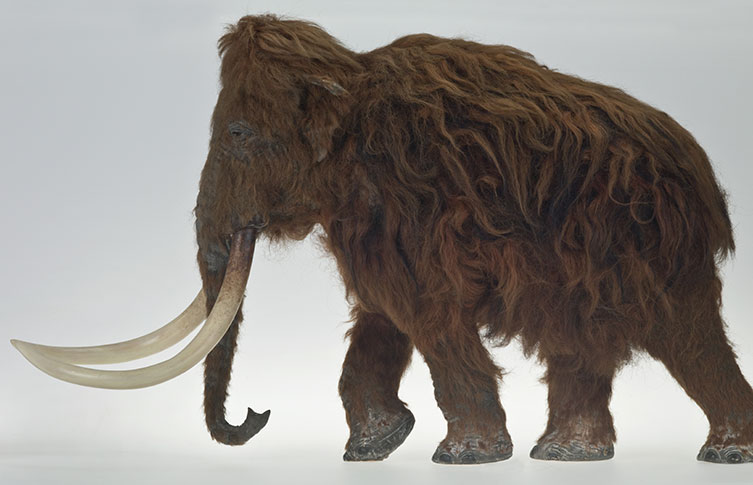
Scientists have been trying to genetically-engineer a mammoth from an Asian elephant, which is the woolly mammoth's closest living relative. Projects like these raise numerous ethical questions.
An attempt to resurrect dinosaurs presents many caveats scientifically and ethically - making things to put in zoos or amusement parks like Jurassic World likely isn't the answer. So for now dinosaurs are probably going to remain safely in the past. But using genetic engineering to bring back extinct animals might be considered reasonable in some circumstances.
'I think there is potentially an argument for bringing back something that we humans made extinct. So if someone was going to bring back the passenger pigeon, then I think you could justify that. They were living in a modern ecosystem and could fit in.'
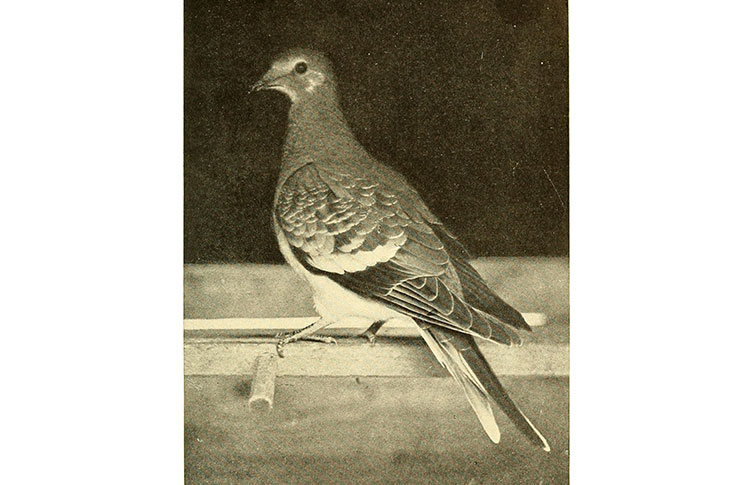
The passenger pigeon (Ectopistes migratorius) is an extinct migratory species. These birds died out in the nineteenth century due to extensive hunting by people and rapid loss of their deciduous forest habitats. Image: Internet Archive Book Images/ Flickr
Jurassic Park may not have got dinosaur resurrection quite right, but nevertheless it did make one particularly worthy point, Susie concludes:
'As Dr Malcolm says in Jurassic Park - "just because you can, doesn't mean that you should."'
Do you have a burning question about science or nature you want answered? Fill out the form below and we'll work with our scientists to answer some of them in our online magazine Discover or on our YouTube channel.
This new feature is in beta. Find out more.
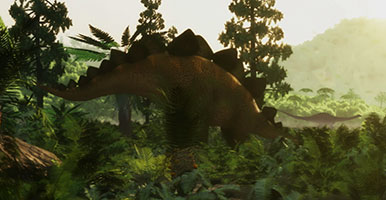
Find out what Museum scientists are revealing about how dinosaurs looked, lived and behaved.
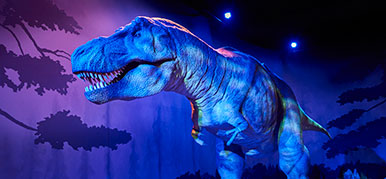
Visit the Dinosaurs gallery and see the ancient animals that once roamed Earth.
Did you know we have on-demand courses available now? Live your dream and become a palaeontology pro with our expert scientist.
Don't miss a thing
Receive email updates about our news, science, exhibitions, events, products, services and fundraising activities. We may occasionally include third-party content from our corporate partners and other museums. We will not share your personal details with these third parties. You must be over the age of 13. Privacy notice.
Follow us on social media